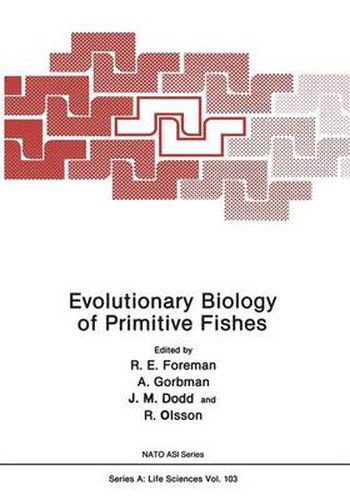Readings Newsletter
Become a Readings Member to make your shopping experience even easier.
Sign in or sign up for free!
You’re not far away from qualifying for FREE standard shipping within Australia
You’ve qualified for FREE standard shipping within Australia
The cart is loading…






This title is printed to order. This book may have been self-published. If so, we cannot guarantee the quality of the content. In the main most books will have gone through the editing process however some may not. We therefore suggest that you be aware of this before ordering this book. If in doubt check either the author or publisher’s details as we are unable to accept any returns unless they are faulty. Please contact us if you have any questions.
What, precisely, is a primitive fish? Most biologists would agree that the living cyclostomes, selachians, crossopterygians, etc. cannot be considered truly primitive. However, they and the fossil record have served to provide the information which forms the basis for speculation concerning the nature of the original vertebrates. This symposium of biologists from a variety of disciplines was called together to create collectively, from the best available current evidence, a picture of the probable line of evolution of the prototype primitive fishes. The symposium was designed to follow one that took place in Stockholm in 1967, convened for a similar purpose, with about the same number of participants. It is a matter of interest that almost the entire 1967 symposium (Nobel Symposium 4) dealt only with the hard tissues, whether fossil or modern. In charting the course of the present symposium it was felt that the intervening years have produced numerous lines of new evidence that could be employed in the same way that a navigator determines his position. Each field, be it adult morphology, geology, ecology, biochemistry, development or physiology, generates evidence that can be extrapolated backward from existing vertebrate forms and forward from invertebrate forms. If the intersect of only two lines of evidence produces a navigational fix of rather low reliability, then an intersect, however unfocussed, of multiple guidelines from more numerous disciplines might provide a better position from which to judge early vertebrate history.
$9.00 standard shipping within Australia
FREE standard shipping within Australia for orders over $100.00
Express & International shipping calculated at checkout
This title is printed to order. This book may have been self-published. If so, we cannot guarantee the quality of the content. In the main most books will have gone through the editing process however some may not. We therefore suggest that you be aware of this before ordering this book. If in doubt check either the author or publisher’s details as we are unable to accept any returns unless they are faulty. Please contact us if you have any questions.
What, precisely, is a primitive fish? Most biologists would agree that the living cyclostomes, selachians, crossopterygians, etc. cannot be considered truly primitive. However, they and the fossil record have served to provide the information which forms the basis for speculation concerning the nature of the original vertebrates. This symposium of biologists from a variety of disciplines was called together to create collectively, from the best available current evidence, a picture of the probable line of evolution of the prototype primitive fishes. The symposium was designed to follow one that took place in Stockholm in 1967, convened for a similar purpose, with about the same number of participants. It is a matter of interest that almost the entire 1967 symposium (Nobel Symposium 4) dealt only with the hard tissues, whether fossil or modern. In charting the course of the present symposium it was felt that the intervening years have produced numerous lines of new evidence that could be employed in the same way that a navigator determines his position. Each field, be it adult morphology, geology, ecology, biochemistry, development or physiology, generates evidence that can be extrapolated backward from existing vertebrate forms and forward from invertebrate forms. If the intersect of only two lines of evidence produces a navigational fix of rather low reliability, then an intersect, however unfocussed, of multiple guidelines from more numerous disciplines might provide a better position from which to judge early vertebrate history.